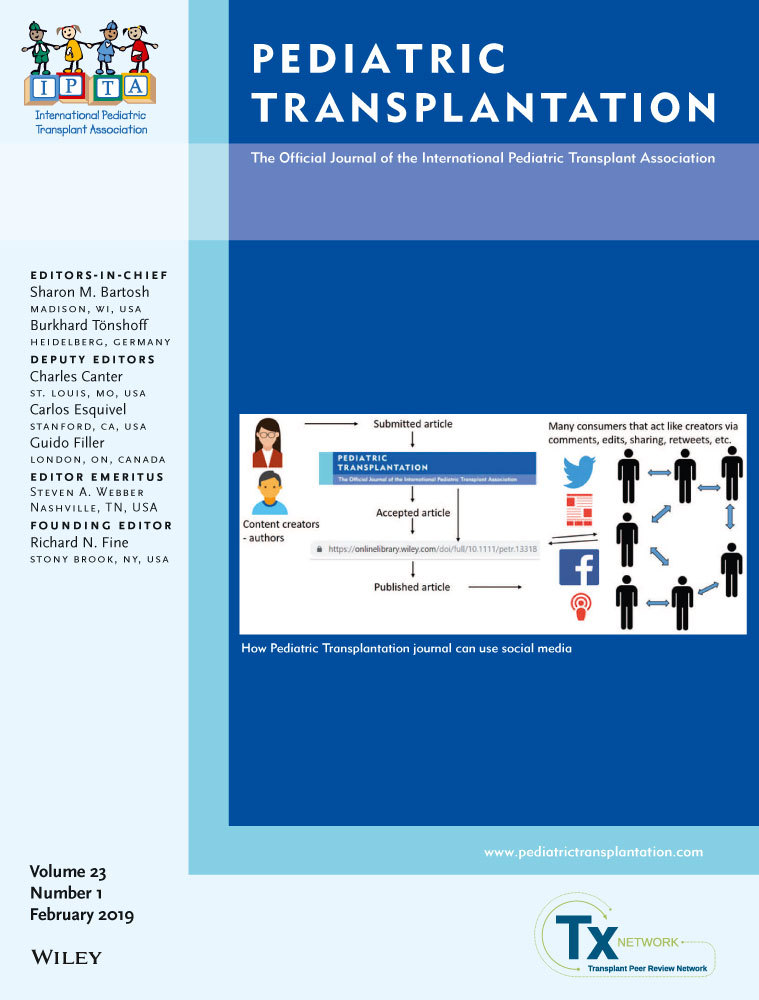BK polyomavirus viremia and antibody responses of pediatric kidney transplant recipients in Finland
Funding information
The study was supported by the grants of the Helsinki University Hospital Funds (IL and HJ) and Pediatric Research Funds (HJ) and by an unrestricted appointment grant of the University of Basel (HHH).
Abstract
Background
BKPyV is an important cause of premature graft failure after KT. Most clinical studies describe BKPyV infection in adult KT patients. We studied the prevalence of post-transplant BKPyV viremia, serology, and graft function in pediatric KT recipients.
Methods
Forty-six pediatric patients transplanted between 2009 and 2014 were followed up for BKPyV DNAemia by plasma PCR for median 2.3 (range: 1-6) years. BKPyV-specific antibodies were retrospectively analyzed using virus-like particle ELISA. GFR was measured annually by 51Cr-EDTA clearance, and serum samples were screened for DSAs by Luminex assay.
Results
BKPyV viremia was demonstrated in nine patients at a median of 6 months post-KT. Early BKPyV viremia at 3 months post-KT associated with decreased concomitant GFR and tendency for decreased subsequent graft function. Three of nine patients with BKPyV viremia developed DSA, all against class II antigens. PyVAN developed to four patients and responded to judicious reduction in IS. One graft was lost later due to ABMR. BKPyV-IgG was found in 18 of 31 patients (58%) tested at transplantation, and seven recipients seroconverted after transplantation with a significant increase in IgG levels with IgM. Finally, BKPyV-IgG was detectable in 31 of 40 patients (78%) at the end of the study.
Conclusions
Post-transplant BKPyV viremia in pediatric KT patients may alter graft function and contribute to progression of chronic allograft injury. BKPyV-IgG predicts past exposure. Low or absent BKPyV-specific antibody levels were seen pretransplant in 42% of tested patients, but were not predictive of prolonged replication or poor outcome.
CONFLICT OF INTERESTS
The authors declare no conflict of interests.




